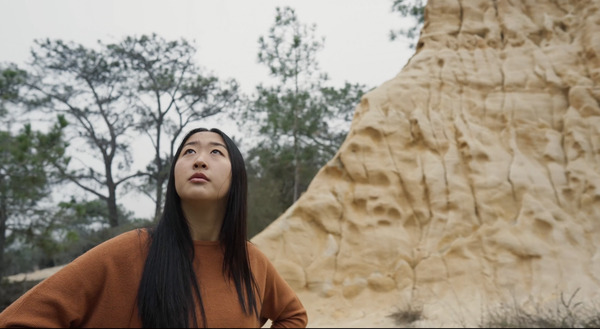The film series “Generation Impact” profiles Gen-Z inventors who use technology to improve the world. This year, “Generation Impact: The Scientist” follows Emily Tianshi ’25 and her journey in building a device that can help produce water in areas with drought. Tianshi lives in Wilbur and wants to pursue a major at the intersection of science and policy. The Daily interviewed Tianshi about her motivations and experience when building this device.
The Stanford Daily [TSD]: Could you tell us a little bit about your motivations for trying to solve the water crisis?
Emily Tianshi [ET]: I think it started when I saw the effects of drought in California. Droughts would shape the state’s water sensitivity, leading to lots of laws surrounding water usage. I’m from Southern California, so we had to constantly think about water. There was a period of time when the beautiful lawns of grass near me all either died or turned into artificial grass. So I did some research into the matter: it turns out that California’s situation is actually relatively better than many other places. For instance, we don’t have to worry about finding water for ourselves everyday. But the water crisis is so much worse in other places in the world.
TSD: What is your project about in “Generation Impact: The Scientist?”
ET: My project was a device that would mimic the characteristics of the Torrey pine tree, which is found in San Diego. I studied the properties of the pine tree, most notably its moisture, which harvests micro patterns. The needles and surface properties of the Torrey pine tree are very unique from other pine trees. Most pine trees have needles that are hydrophobic, but Torrey pine needles are hydrophilic, which means that they absorb water. Thus, they absorb more water than your typical plant that goes through photosynthesis. But, upon closer inspection, there are stripes that are hydrophobic and hydrophilic, allowing the Torrey pine needles to contain and release water. The device in the video, which is modeled after the Torrey pine tree, allows for water harvesting.
TSD: You raise a really strong point regarding garage labs (a self made laboratory in a garage) in the documentary: garage laboratories allow for potential scientists to innovate even if they don’t have the latest cutting edge technology. Could you elaborate on this? Is there some advice you could give to those who want to start their own garage lab?
ET: Garage labs are really powerful because they give the opportunity to address your personal questions. You can come up with a series of experiments to do using objects you already have. Science innovation is typically pictured with geniuses working in million dollar laboratories, but this picture isn’t very accurate. We really need everybody who has an idea to try it out, especially with the climate crisis. I’ve seen high schoolers — even middle schoolers — who have really great ideas, and they are totally accessible. I made a website with my brother called “Clearwater Innovation,” where plenty of kids can share their brilliant ideas. As for advice, you’ll probably run into roadblocks along the way, so don’t be afraid to ask for help! Professors are very open to helping anyone as long as they are passionate about what they are doing.
TSD: Speaking of roadblocks, could you elaborate on any that you personally experienced?
ET: Nearly every step of the way was a roadblock. What was definitely helpful was reaching out to professors through email or at conferences. For instance, I needed a bigger fog chamber and a special camera for my work, so I presented my idea to a professor at the Torrey Pines Docent Society and asked him if he had a lab space and camera I was looking for. I ended up working at his lab at University of California, San Diego over the summer, and he was kind enough to allow me to borrow his equipment!
TSD: What would you like to accomplish during your time at Stanford?
ET: I think the great thing about Stanford is that you can invest in the power of intersectionality. There are activists in so many different fields. You can take classes with them, talk with them, grab lunch with them, and these conversations can improve your own advocacy. Doing so expands my view and allows me to consider stakeholders that I haven’t thought of before. I get a lot of inspiration from my peers. In high school, it was just about science for me, but at the end of the day, science can’t get you everywhere. You need different people to help you, and I think I’m learning a lot in that regard.
TSD: Do you have any closing remarks?
ET: I really hope that people don’t come to view me as some sort of hero or genius. I really did this because I wanted to and because it was fun. The entire point I want to show in that film is that if I can do it, then anyone can.
Editors Note: This transcript has been lightly edited for clarity.
